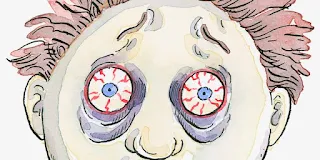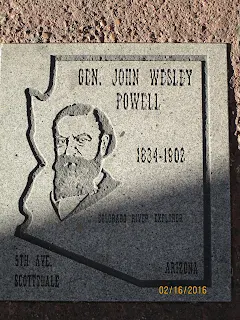 |
| Stained glass - depicting charge by the Dragoons |
After visiting friends in San Diego recently, we stopped in Escondido for fuel. While at the pump, Laureen delved into her habit and asked me, “Did you know that a battle was fought near us, during the Mexican-American war?”
“Nope,” I hadn’t heard of it before – sad for a guy who’s lived in Southern California most of his life. “Where?”
“Five miles east down Highway 78.”
Enough said. Fueled and ready for a new adventure.
 |
| A new adventure - count us in! |
A very informative gentleman who works at the state park, Ranger Gil, was a font of knowledge concerning the history of the San Pasqual Valley. He actually informed us that he wasn’t actually a ranger, but an aide at the park.
Gil, regaled us on every moment of the battle, but ended up with a rather poetic take on the entire war itself.
“You know, many people don’t talk about the Mexican-American War in school, and certainly not this battle. It’s a chapter in both our histories that don’t put us in any positive light. It really was a battle of greed and power, from both sides of the border. There really were no clear winners – especially here on this battlefield.”
Turns out, when walking through the museum at the state park, one could see how both sides, at least here, made many strategic mistakes and lives were lost. The Californios had made enemies of the local natives, the Kumeyaay (also known as the Ipai), who then sided with the Americans, giving them aide and assistance when needed. And the Americans believed they could easily overcome the Californios, and made many tactical mistakes – too many to discuss here.
 |
| View of the main battlefield from the Visitor's Center |
Fascinating but truly sad, that the bloodiest military action in California, during the war between the United States and Mexico, occurred near the city of Escondido.
Turns out, in December of 1846, General Stephen W. Kearny was traveling through an area north of San Diego and east of what would become Escondido, to bring battle against a group of Californios (people of Hispanic descent, still living in California after Mexico’s War of Independence from Spain) under the command of Captain Andres Pico. On President Polk’s orders, these loyalists to Mexico needed to be removed from California at all costs.
Unfortunately, that cost was twenty-two American soldiers of the First Dragoons and a half dozen of the Californios. The weather was damp, so the powder to fire muskets was wet and wouldn’t fire, leaving Kearny’s men to fight hand to hand combat with the Californios. The American soldiers stood no chance, with only swords and non-functioning muskets, as the Californios were armed with long lances which could kill an enemy yards away in battle, as well as lariats which could easily capture or make an enemy combatant ineffective.
As we looked out the large glass windows, which allowed visitors a panoramic view of the battlefield. It was hard to digest how death came so easily in such a beautiful valley. It had. And, though we could read the informative descriptions about the battle and reasons for the battle, it just didn’t make the reality any better.
 |
| Plaque commemorating the San Pasqual Battle |
 |
| Plaque naming the Americans killed in action |
“After this, it’s always nice to have something fun to visit," he stated. He was right.
Kit Carson, the famous frontier scout, had been with Kearny during the engagement, and there is the Kit Carson Park and Amphitheater, located in Escondido, right off Highway 15. This 285 acre city park, has it all for any outdoors-person, including the only American sculpture park by the late, international artist, Niki de Saint Phalle. This garden of sculptures was Phalle’s way of depicting California’s mythic, historic and cultural roots.
 |
| Part of the garden sculptures |
It definitely requires a re-visit, to be able to walk among the huge imaginative creatures molded by Phalle.
So, when out of town, check around for places nearby worth seeing – we know there are plenty.
For further information:
https://www.parks.ca.gov/?page_id=655
https://www.escondido.org/queen-califias-magical-circle.aspx


















